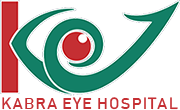Color Vision Test
The Ishihara test is a color perception test for red-green color deficiencies, the first in a class of successful color vision testsThe test consists of a number of Ishihara plates, each of which depicts a solid circle of colored dots appearing randomized in color and size.[3] Within the pattern are dots which form a number or shape clearly visible to those with normal color vision, and invisible, or difficult to see, to those with a red-green color vision defect.
Corneal Topography
The Topographic Modeling System TMS-4a is a device that provides information about corneal configuration and refractive characteristics. Unlike conventional keratometers, this device employs color maps incorporating the most modern computer technology, to permit easier and more accurate diagnosis than conventional devices. The TMS-4 has a “Light Cone” keratoscope with a short working distance.
It is Used for following purposes-
- Early screening of keratoconus suspects.
- In cases with established keratoconus, for monitoring progression and doing a timely collagen cross linking.
- Surgical planning in cases with astigmatism, Contact lens fitting.
- Incision placement and intrastromal ring placement in keratoconus.
Ocular Coherence Tomography (OCT)
Ocular coherence tomography is a procedure that uses a computer to evaluate the interference patterns of light reflected from the interior of the eye.
OCT gives the ophthalmologist a clear view of the layers of the retina and aids in the diagnosis of retinal conditions associated with fluid leakage including macular edema and macular degeneration.
CIRRUS HD OCT 5000
The next generation 3D Optical Coherence Tomography system.It is a noninvasive, non contact, transpupillary Imaging technology, with ultra-high speed 27,000 axial scans per second the systems advanced clinical protocols to be used for ocular examination with greater resolution and clarity.
Optovue rtvue-100 OCT
The Optovue RTVue is an ultra-high speed, high resolution optical coherence tomography (OCT) retina scanner used for retina imaging and analysis. It is based on the next generation Fourier-Domain Optical Coherence technology just emerging from clinical research in the last two years. The ultra-high speed and high resolution features enable the FD-OCT to visualize the retinal tissue with ultra-high clarity in a fraction of seconds. myopic patients.
Tracking is available now for the Optovue RTVue SD-OCT.
- Comprehensive Glaucoma Analysis with 3 in 1 registered scan
- Disk/Rim/Cup & RNFL thickness map
- Retinal Thickness Map – 7 mm x 7 mm
- RNFL thickness at 3.45mm diameter around disk
- Examine Retina with multiple Views
- Visualize Pathology in 3D
- Quantitative progressive comparison after treatment
- Visualize pathology in all perspective views
- 3D Scan in 2 seconds
- Total Corneal Power
The layers within the retina can be differentiated and the retinal thickness can be measured. Also, the change from previous visit, effect of treatment can be analyzed.
Photography of the Eye (including retinal photography and fundus photography)
Photographs of the back of the eye (retina or fundus) are used to diagnose and document progression and treatment of eye conditions such as macular degeneration, diabetic retinopathy, optic nerve diseases and other conditions involving the retina. An Ophthalmic Photographer, specially trained to photograph the eye, takes the pictures. Photography of the back of the eye takes a few minutes.
Visual Field Tests (Goldmann, Humphrey Visual Analyser)
The visual field is the area that a person can see at any one time. The visual field test, also know as perimetry, determines the borders of that field are and how well a person’s eyes see in different areas of the field. It tests the function of the retina, optic nerve and visual pathways to the brain.The HVF is an automated visual field. The computer flashes lights on and off and the patient presses a button each time he/she sees a light.
Ultrasound of the Eye (Biometry/IOL calculation, A-Scan, B-Scan)
Ultrasound of the eye uses high frequency sound waves to detect and diagnose disorders behind the eye and For calculating axial length of eye.. Ultrasound of the eye is used when the doctor does not have a good view into the eye or behind the eye or needs to evaluate a specific lesion. Ultrasound of the eye is painless, requires about 15 minutes, and can provide detailed information.
All patients undergoing cataract surgery must have ultrasound of the eye to be operated to determine the power of the artificial lens. Usually, the other eye is evaluated at the same time. This test is painless and takes approximately 15 minutes. Ideally, the patient should have the test performed at least one week before surgery.
